Occupation Choreographer/Dancer Role Choreographer | Name Trisha Brown Years active 1962–present | |
 | ||
Awards MacArthur Fellowship Similar People | ||
Accumulation trisha brown
Trisha Brown (November 25, 1936 – March 18, 2017) was an American choreographer and dancer, and one of the founders of the Judson Dance Theater and the postmodern dance movement.
Contents
- Accumulation trisha brown
- Glacial decoy excerpt trisha brown dance company
- Early life and education
- Dance
- Drawing
- Exhibitions
- Recognition
- Death
- Works
- References
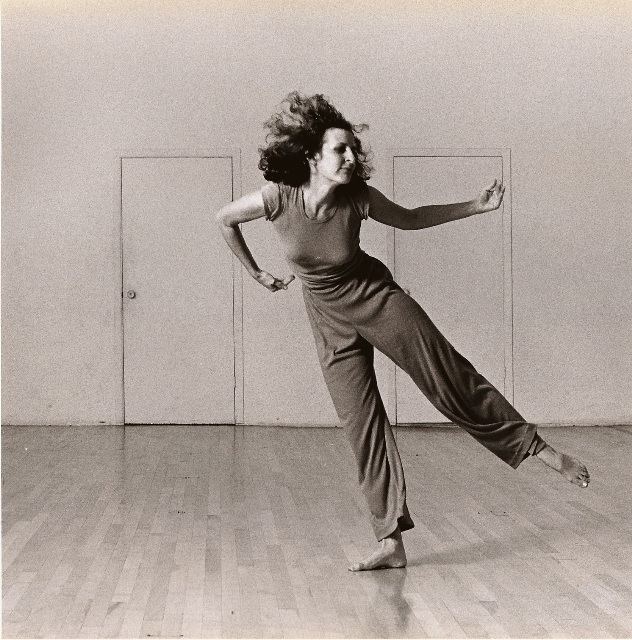
Glacial decoy excerpt trisha brown dance company
Early life and education
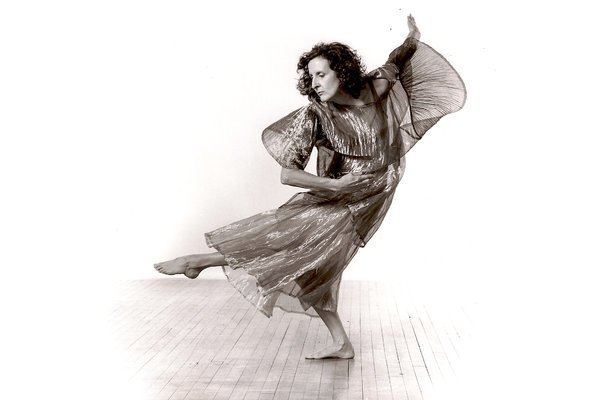
Brown was born in Aberdeen, Washington in 1936, and received a B.A. degree in dance from Mills College in 1958. Brown later received a D.F.A. from Bates College in 2000. For several summers she studied with Louis Horst, José Limón, and Merce Cunningham at the American Dance Festival, then held at Connecticut College.
Dance
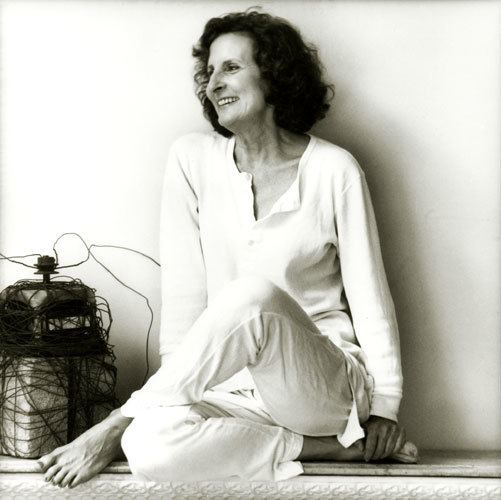
In 1960 Brown participated in an experimental workshop devoted to improvisation at the studio of Anna Halprin, in Kentfield, California. Subsequently, at the urging of fellow choreographers, Simone Forti and Yvonne Rainer, Brown moved to New York to study composition with Robert Dunn, who taught a class at Merce Cunningham's studio, based on John Cage's theories of chance.
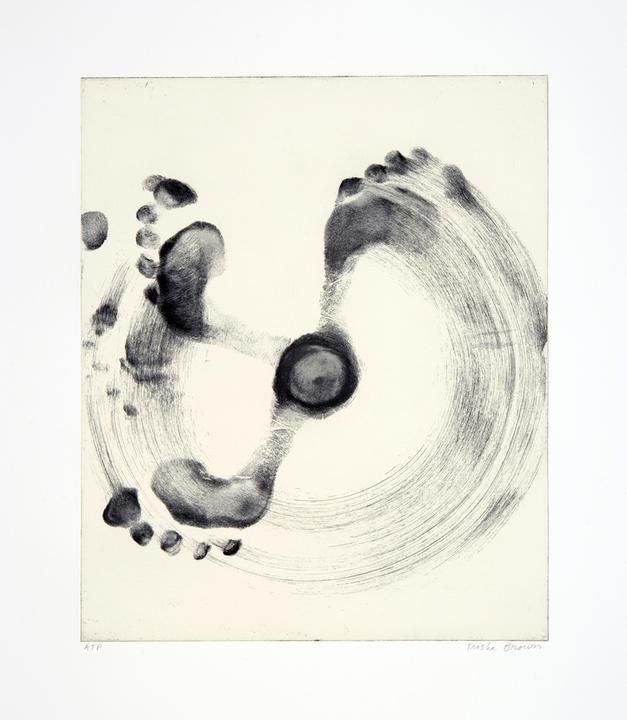
After moving to New York City in 1961, Brown trained with dancer Anna Halprin and became a founding member of the avant-garde Judson Dance Theater in 1962. There she worked with experimental dancers Yvonne Rainer, Steve Paxton, Twyla Tharp, Lucinda Childs, and David Gordon. She also joined a composition class led by Robert Dunn, a musician from the Merce Cunningham dance studio who was interested in applying the musical ideas of John Cage (Cunningham's partner and regular collaborator) to dance.
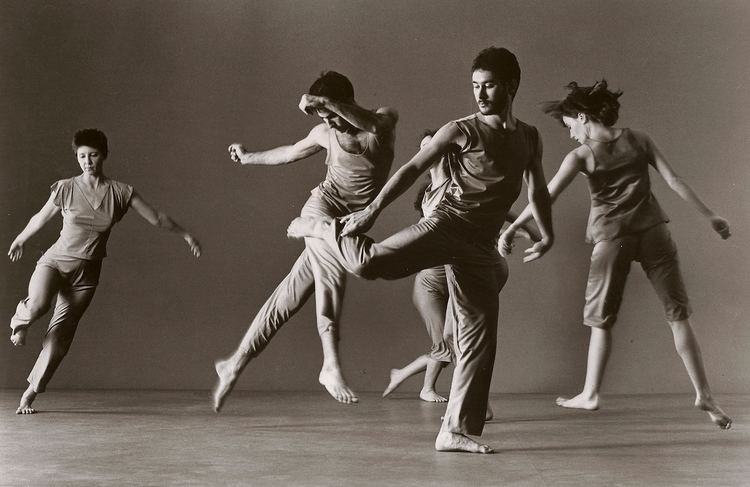
In 1970 she cofounded the Grand Union, an experimental dance collective, and formed the Trisha Brown Dance Company. Brown received a MacArthur Foundation grant in 1991.
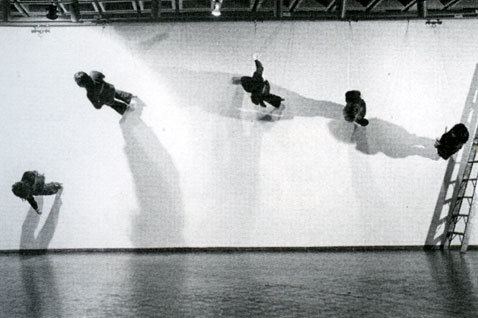
In the late 1960s Brown created her own works which attempted to defy gravity, using equipment such as ropes and harnesses, to allow dancers to walk on or down walls or to experiment with the dynamics of stability. These “equipment pieces” were the first dances to comprise a distinct series in what would become a working method for Brown as she went on to create various “cycles” of dances throughout her career. Brown’s early works Walking on the Wall (1971) and Roof Piece (1971) were designed to be performed at specific sites.
Accumulation (1971), which is executed with the dancers on their backs, has been performed in public spaces of all kinds, including on water, with the dancers floating on rafts as they methodically work through the piece's graduated gestures. Walking on the Wall involved dancers in harnesses moving along a wall, while Roof Piece took place on 12 different rooftops over a ten-block area in New York City's SoHo, with each dancer transmitting the movements to a dancer on the nearest roof. In 1974, Brown began a residential relationship with the Walker Art Center in Minneapolis, MN, that has continued to this day. With 1978's Accumulation with Talking plus Watermotor, a complex solo combining elements of three other pieces, she demonstrated a mental and physical virtuosity seldom seen in the dance world, then or now. Brown's rigorous structures, combined with pedestrian or simple movement styles and tongue-in-cheek humor brought an intellectual sensibility that challenged the mainstream "modern dance" mindset of this period.
During the 1980s Brown produced large-scale works intended for the stage and began her artistic collaborations, beginning with Glacial Decoy (1979) which had sets and costumes by artist Robert Rauschenberg. This period was most notable for the slithery and highly articulated movement style which characterized much of her work during this time. The Molecular Structure cycle, which included Opal Loop (1980), Son of Gone Fishin' (1981) and another collaboration with Rauschenberg, Set and Reset (1983), featuring a score by performance artist Laurie Anderson and a set design by Rauschenberg, solidified Brown's stature as an innovator within the dance world and as an artist of global significance. Three screens simultaneously broadcast separate black and white film collages from five 16 millimeter projectors (more than 20 years before a video component became the norm in new choreography), while the dancers rippled around the stage in part-translucent costumes marked with gray and black figures that resembled newsprint.
Unlike Merce Cunningham and John Cage, who worked separately on projects and left it to the viewer to put the elements together, Brown and her collaborators worked toward a shared vision.
Sculptor Nancy Graves designed the set for Lateral Pass, (1985), which began Brown's Valiant cycle. It used a larger pad, bolder movement phrases to articulate Brown's evolving spatial aesthetics. This led to Newark (1987), with decor and a sound concept by Donald Judd. For Astral Convertible (1989) and Foray Forêt (1990), costumes and sets were once again made by Rauschenberg. Astral Convertible, in particular, originally was commissioned by the National Gallery of Art in Washington, D.C., as part of a major Robert Rauschenberg exhibition in 1991 and presented on the museum's steps, overlooking the National Mall. Performances of Foray Forêt include local marching bands from the presenting city. For M. G. (1991; "M.G." refers to Michel Guy, a former French minister of culture who died in 1990) is sculptural and kinetic, opening with a dancer running in figure-eight circles around the stage, slowing into loping motion down the center.
In You Can See Us (1996), she performed together with Mikhail Baryshnikov. A mirror duet drawn from a solo, If You Couldn’t See Me (1994), in which Brown performed entirely with her back to the audience, it is performed to ten minutes of an electronic “sound score” on a bare stage.
In the 1990s she turned to choreographing classical music, creating M.O. (1995) based on the Musical Offering by German composer Johann Sebastian Bach, and her first opera production, L'Orfeo (1998) by Italian composer Claudio Monteverdi. Brown found inspiration in jazz for El Trilogy (1998–2000), completed her second opera, Luci mie traditrici (composed by Salvatore Sciarrino) in 2001, and in 2002 choreographed the song cycle Die Winterreise (Winter’s Journey) by Austrian composer Franz Schubert for Simon Keenlyside. Brown worked again with Laurie Anderson in 2004 on O Zlozony/O Composite for the Paris Opera Ballet. Among her well-known disciples are Diane Madden and Stephen Petronio, Brown's first male dancer in 1979. Brown choreographed her last piece in 2011.
Drawing
Though Brown has long been known for her collaborations with artists, it is less known that she has also produced a substantial body of drawings. In recent years she has shown these drawings, including during a major multidisciplinary 2008 celebration of her work at the Walker Art Center, Minneapolis. In 2009, the Chelsea gallery Sikkema Jenkins & Company, which represents her husband, Burt Barr, presented her first solo exhibition in New York, featuring work dating to the 1970s.
Exhibitions
In 2003, "Trisha Brown: Dance and Art in Dialogue 1961-2001", was organized by the Addison Gallery of American Art at Phillips Academy and the Tang Teaching Museum and Art Gallery at Skidmore College; the exhibition later travelled to the Henry Art Gallery in 2004. In 2007, works of Brown's choreography and drawings were included in documenta 12. In 2008, the Walker Art Center presented "Trisha Brown: So That the Audience Does Not Know Whether I Have Stopped Dancing." In honor of her company's 40th anniversary season in 2010, the Whitney Museum of American Art hosted several performances as part of "Off the Wall: Part 2 — Seven Works by Trisha Brown".
In 2011, the Trisha Brown Dance Company took over the atrium of the Museum of Modern Art as part of a Performance Exhibition Series in conjunction with the survey “On Line: Drawing Through the Twentieth Century”. That same year, "Trisha Brown" was mounted at the Serralves Foundation, Porto.
Recognition
Brown served on the National Council on the Arts from 1994 to 1997. She has received numerous honorary doctorates and is an Honorary Member of the American Academy of Arts and Letters. In 1988 she was named Chevalier dans L’Ordre des Arts et Lettres by the government of France. In January 2000 she was promoted to officier and in 2004, was again elevated; this time to the level of commandeur. Brown’s Set and Reset is included in the baccalaureate curriculum for French students pursuing dance studies. She was a 1994 recipient of the Samuel H. Scripps American Dance Festival Award. In 2000, she was inducted into the National Museum of Dance's Mr. & Mrs. Cornelius Vanderbilt Whitney Hall of Fame in 2000. In 2002, she was awarded the National Medal of Arts, and in 2005 she won the Prix Benois de la Danse for lifetime achievement.
In 2011, Brown won the Dorothy and Lillian Gish Prize, an award worth about $300,000 that was named after the silent film actresses, and the Bessie Award for lifetime achievement.
As part of the Rolex Mentor and Protégé Arts Initiative in 2010-11, Brown selected Australian dancer and choreographer Lee Serle as her protégé.
In 2012 Brown was the recipient of a United States Artists Fellow award.
Death
Brown died on March 18, 2017, in San Antonio, Texas, after a lengthy illness. She is survived by her son, Adam Brown, his wife Erin, her four grandchildren – and by her brother Gordon Brown and sister Louisa Brown. Trisha Brown's husband, artist Burt Barr, died on November 7, 2016.
Works
Brown's works include:
